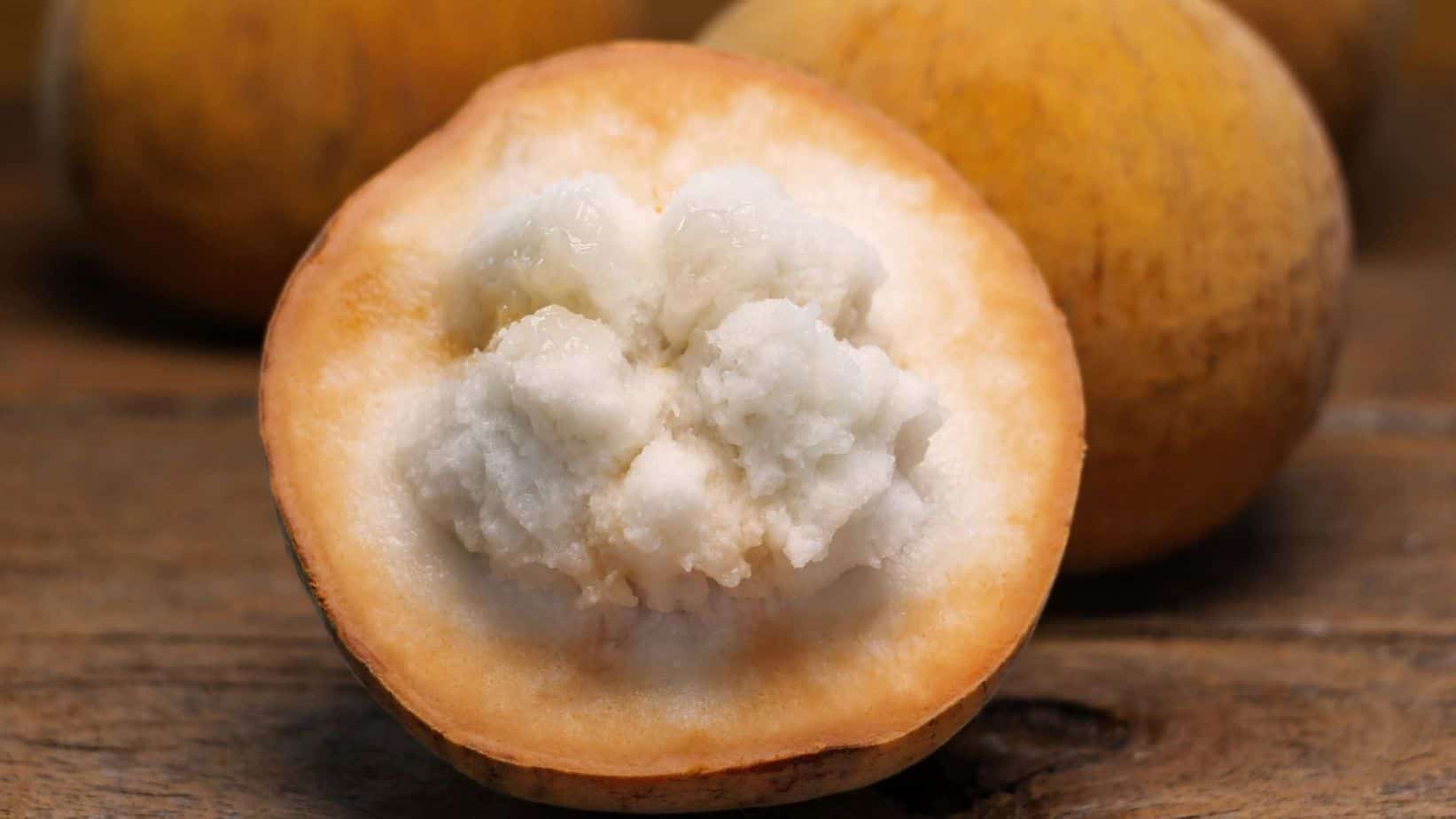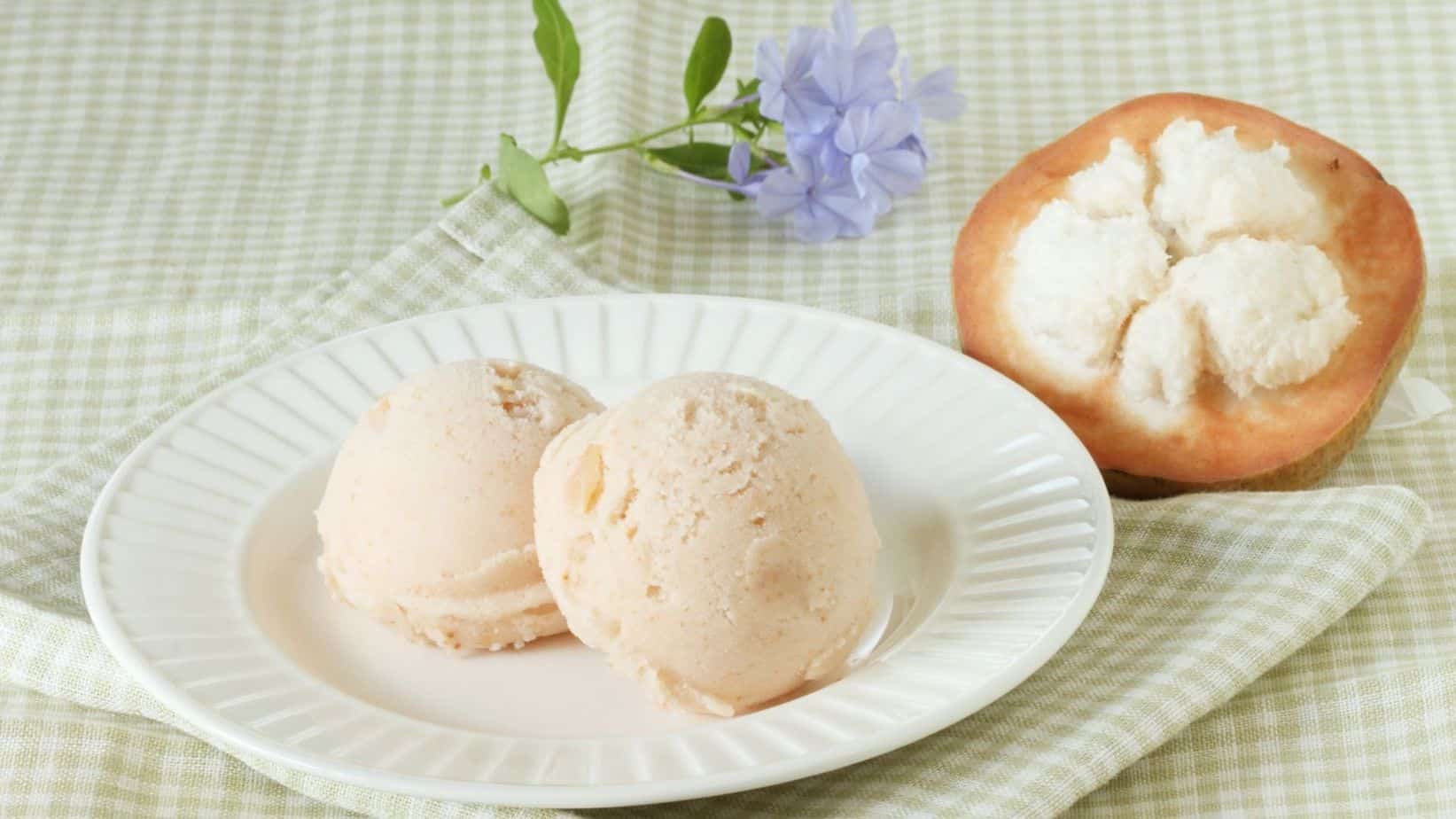
Even if you love all kinds of fruit, you probably have never seen or heard about santol. This round to oval-shaped fruit goes by cotton fruit, Sentul, sandal, kechapi, lolly fruit, wild mangosteen, and many more. In this blog post, we’ll discuss everything about the santol fruit, including where to find it, its varieties, health benefits, and other fun facts.
What is Santol Fruit?
Santol fruit measure about 4 to 7 cm in diameter and are covered by fuzzy, leathery, wrinkled skin. The fruits have a juicy white tissue on the inside and come with 3 to 4 brown seeds that are not edible. A rind that is somewhat orange in color surrounds the flesh. The santol tree’s scientific name is sandoricum koetjape, and it belongs to the family Meliaceae, which is the same family that mahogany belongs to. Santol fruits have peachy orange-colored skin but sometimes have a yellow or slightly red appearance. Santol is one of the two species that produces edible fruits in the entire family.
Where Are They Grown?

The santol fruits are believed to have originated from Cambodia, southern Laos, and some parts of Malaya. Then, they’re believed to have spread into Malaysia, India, the Andaman Islands, Mauritius, the Moluccas, Indonesia, and the Philippines, where they have become a staple. So, as of today, the fruits are predominantly cultivated in Southeast Asia.
The Santol tree is valued in Malaysia and Asia for its savory fruits, timber, and shade. You’ll find it on Southeast Asia’s roadsides since it has extensive branches, doesn’t litter the ground, and is highly resistant to wind. The Santol tree grows to a height of 15 to 40 meters and lasts 5-6 years before producing its first fruits. A fully mature Santol tree can produce around 19,000 to 24,000 fruits annually. The plant yields better when the rains are evenly distributed throughout the year, but it’s also known to withstand extended dry periods.
Santol Fruit Varieties
Generally, Santol boasts two varieties; the Yellow Santol (previously known as S. nervosum or S. Indicum) and the Red Santol (previously known as S. koetjape). The main differentiating factor between the two Santol varieties is their leaves and flowers.
1. Yellow Santol Fruit
The yellow santol’s leaves are 15 cm (6 inches) long and transform to yellow when they age. In addition, this variety comes with pinkish-yellow flowers. The fruits boast a thin rind and a 0.6 t0 1.25 cm pulp surrounds the seeds. Yellow santol fruits grow wildly in the Malayan forests.
2. Red Santol Fruit
The red santol comes with 30 cm (12 inches) long leaves that assume a velvet design beneath and transform to red when they age. It boasts greenish or ivory flowers, its fruits have a thick rind, and its seeds are covered by less pulp. Red santol fruits easily fall off the tree when they are ripe.
What Does the Santol Taste Like?
Santol fruits come with a sour to sweet taste, depending on how ripe they are. Unripe santol fruit is very sour and might be unbearable for people trying them for the first time. However, you’ll be surprised to learn that unripe fruits are eaten with salt in the Philippines to make the sour taste more bearable. The riper the “santols” are, the sweeter they become.
Natives in Southeast Asia believe that the larger the circle at the center of the santol fruit, the sweeter it is. However, remember to remove the seeds since the santol seed is not edible.
It Is Used in a Variety of Dishes and Juices

- Santol sherbert is one of the yummiest ice cream/sherberts you will ever try.
- Santol can be used to prepare syrup and also adds a great flavor to cocktails.
- You can use it to prepare a delicious, spicy Thai salad called Som Tam.
- It’s the main ingredient in the preparation of santol pork.
- The santol is a key ingredient in the preparation of a Filipino appetizer known as Sinatolan.
- It is used to prepare Costa Rica Dot Com (santol-ade), lifestyle inquirer (prawns with coconut milk and santol, and the peach kitchen (a popular santol juice).
Health Benefits
The santol plant is renowned for its wide range of benefits from its leaves, fruit, and bark. Here are some of its health benefits:
- Santol is rich in fiber and has good cholesterol, which can help bind bad cholesterol, slowing down fats absorption into the circulatory system.
- These plants’ bark and leaves are said to have anti-inflammatory properties.
- A few studies have shown that regular consumption of santol fruits can prevent Alzheimer’s.
- Santol contains high calcium and phosphorus levels, thus contributing to healthy bones and teeth.
- Helps in weight loss. The santol fruit has soluble and insoluble fiber, making you feel fuller longer. This can reduce overeating and lead to improved health.
Other Fun Facts

- The santol tree offers the best shade, and it’s planted in parks, avenues, and boundaries for its aesthetic value.
- Its root form, what is known as vesicular-arbuscular mycorrhizal, helps in soil conservation.
- The tree produces moderately hardwood that can be used for construction as well as making furniture.
- It is used in perfume since the Santol tree has a characteristic fragrance.
You Might Also Like:
- How to Make Fruit Salad
- The Top 10 Fruit Candy Brands to Indulge Your Sweet Tooth
- What are the Different Banana Options?
